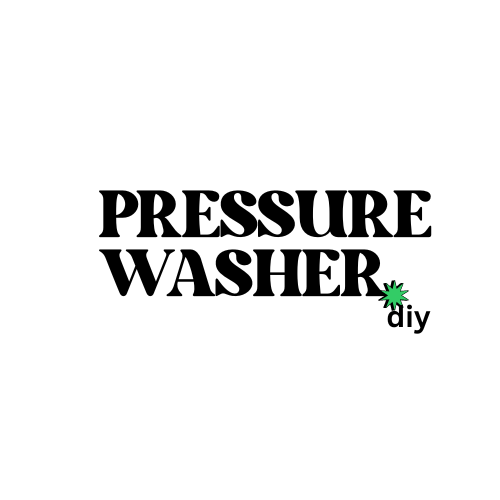If your pressure washer is not drawing water, it can be a frustrating and perplexing issue. However, with the right troubleshooting steps and a bit of technical know-how, you can often resolve the problem quickly and get your pressure washer back in working order. In this comprehensive guide, we’ll dive deep into the potential causes and provide you with a step-by-step solution for each one, ensuring you have the knowledge and tools to tackle this common problem.
Clogged Strainer or Inlet Filter
One of the most common reasons a pressure washer may not be drawing water is a clogged strainer or inlet filter. The strainer, located at the water inlet, is responsible for catching debris and preventing it from entering the pump. Over time, this strainer can become blocked with dirt, debris, or mineral buildup, restricting the flow of water into the system.
To address this issue, follow these steps:
- Locate the water inlet on your pressure washer and identify the strainer or inlet filter.
- Use needle-nose pliers or a small tool to carefully remove the strainer or filter.
- Inspect the strainer or filter for any visible blockages or debris.
- If the strainer or filter is clogged, rinse it thoroughly under running water to remove any accumulated material.
- If the strainer or filter is damaged or cannot be effectively cleaned, replace it with a new one.
- Reinstall the strainer or filter, ensuring it is securely in place.
Clogged or Stuck Check Valves

Another potential cause of a pressure washer not drawing water is clogged or stuck check valves. These valves are responsible for controlling the flow of water into the pump, and if they become obstructed, it can prevent the pump from priming and drawing water.
To inspect and clean the check valves, follow these steps:
- Locate the check valve plugs on your pressure washer, typically found near the pump inlet.
- Use a wrench or socket to remove the check valve plugs.
- Carefully remove the check valves and inspect them for any debris or buildup.
- If the check valves are clogged, use a small brush or compressed air to clean them thoroughly.
- If the check valves are damaged or cannot be effectively cleaned, replace them with new ones.
- Reinstall the check valves and replace the plugs, ensuring they are tightened securely.
Loose or Damaged Connections
Loose or damaged connections in the water supply system can also prevent your pressure washer from drawing water. This includes the hoses, fittings, and any other connections between the water source and the pump.
To check and secure the connections, follow these steps:
- Inspect all the hoses, fittings, and connections in the water supply system for any signs of damage, such as cracks, leaks, or loose fittings.
- Tighten any loose connections using the appropriate wrenches or pliers.
- If any hoses or fittings are damaged, replace them with new ones to ensure a tight, secure connection.
- Check the water inlet connection to the pump, ensuring it is tight and not leaking.
Pump Issues
If the strainer, check valves, and connections are all in good condition, the issue may be related to the pump itself. A malfunctioning pump can prevent the pressure washer from drawing water effectively.
To address pump-related issues, try the following:
- Remove the high-pressure hose from the pump outlet and turn on the water supply.
- Observe the pump to see if it is priming and drawing water. If it is not, the pump may need to be primed or may be damaged.
- To prime the pump, hold the trigger on the spray gun open and allow the water to flow through the system, pushing out any air pockets.
- If the pump still does not prime or draw water, it may need to be repaired or replaced. Consult the manufacturer’s instructions or a qualified technician for further guidance.
Air Leaks
Air leaks in the water supply system can also prevent the pressure washer from drawing water effectively. These leaks can allow air to be drawn into the system, disrupting the water flow.
To check for air leaks, follow these steps:
- Inspect all the hoses, fittings, and connections for any signs of cracks, holes, or loose fittings that could be allowing air to enter the system.
- Use a soapy water solution or a leak detection spray to identify any areas where air may be entering the system.
- Tighten any loose connections or replace any damaged hoses or fittings to eliminate the air leaks.
Additional Tips
To prevent future issues with your pressure washer not drawing water, consider the following additional tips:
- Regular Maintenance: Regularly inspect and maintain your pressure washer, including cleaning the strainer, check valves, and other components, to ensure optimal performance.
- Proper Usage: Use the correct nozzle and pressure setting for the job at hand to avoid damaging the pump or other components.
- Proper Storage: Store your pressure washer properly when not in use, protecting it from freezing temperatures and other environmental factors that could cause damage.
By following the comprehensive troubleshooting steps outlined in this guide and implementing the additional maintenance and usage tips, you’ll be well on your way to resolving the issue of your pressure washer not drawing water and keeping your pressure washer in top working condition.
Reference:
- https://www.youtube.com/watch?v=V1IWCMhtJo4
- https://www.familyhandyman.com/article/pressure-washer-troubleshooting-and-repair/
- http://www.cleanitup.co.uk/smf/index.php?topic=189889.0
- https://www.justanswer.com/small-engine/6tpiy-twice-now-high-pressure-washer-won-t-pass-water.html
- https://www.reddit.com/r/pressurewashing/comments/uynqam/why_doesnt_my_pressure_washer_have_any_water/
